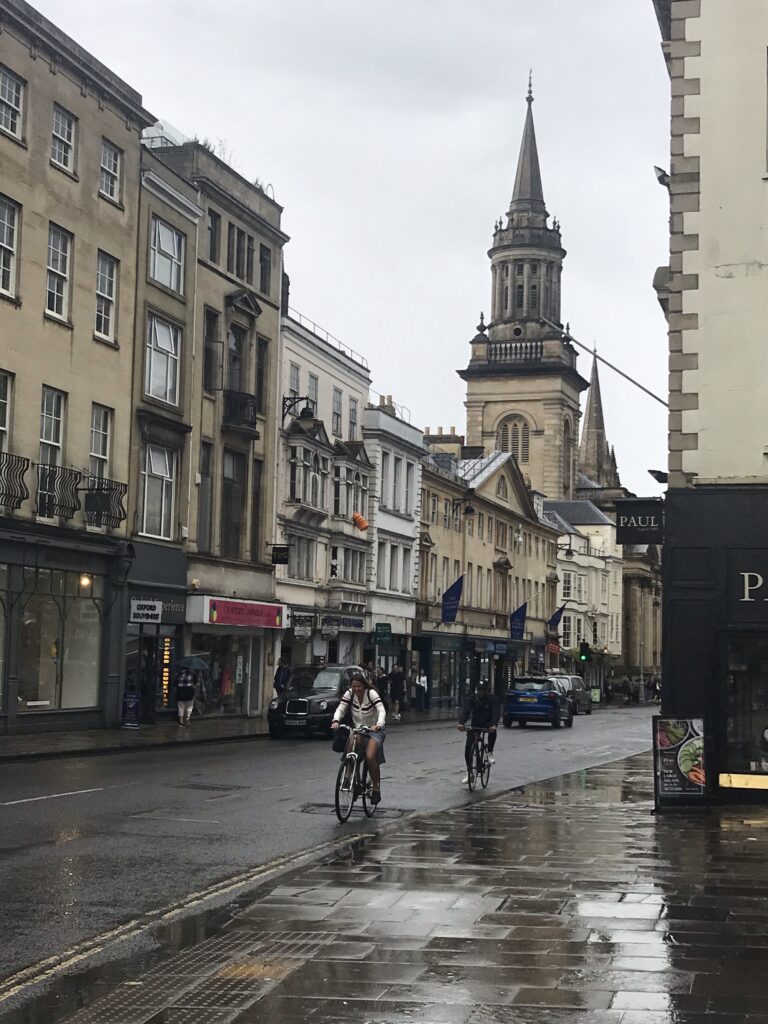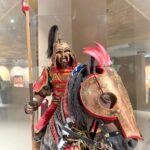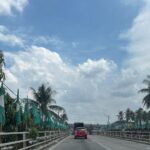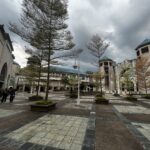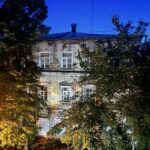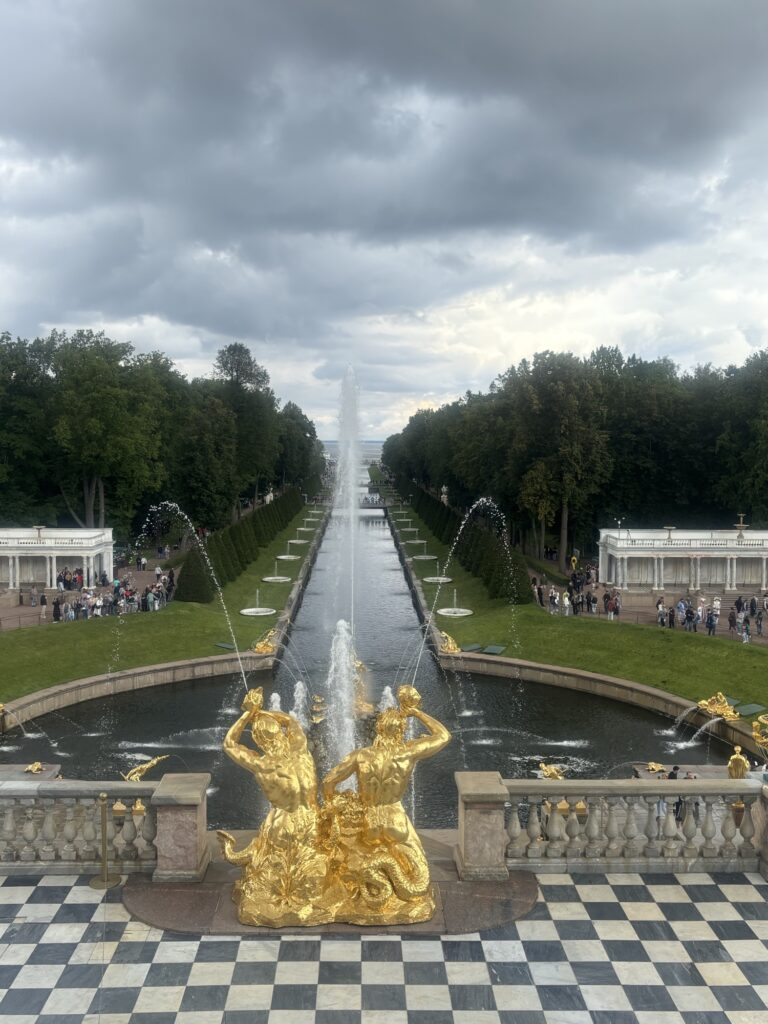
It was the glorious past of the Russian elite society. The time when the royal family (including the Romanovs) ruled Russia. Peterhof is one of Russia’s most spectacular and famous imperial palaces, often referred to as the “Russian Versailles.” It is renowned for its breathtaking fountain system and lavish gardens.
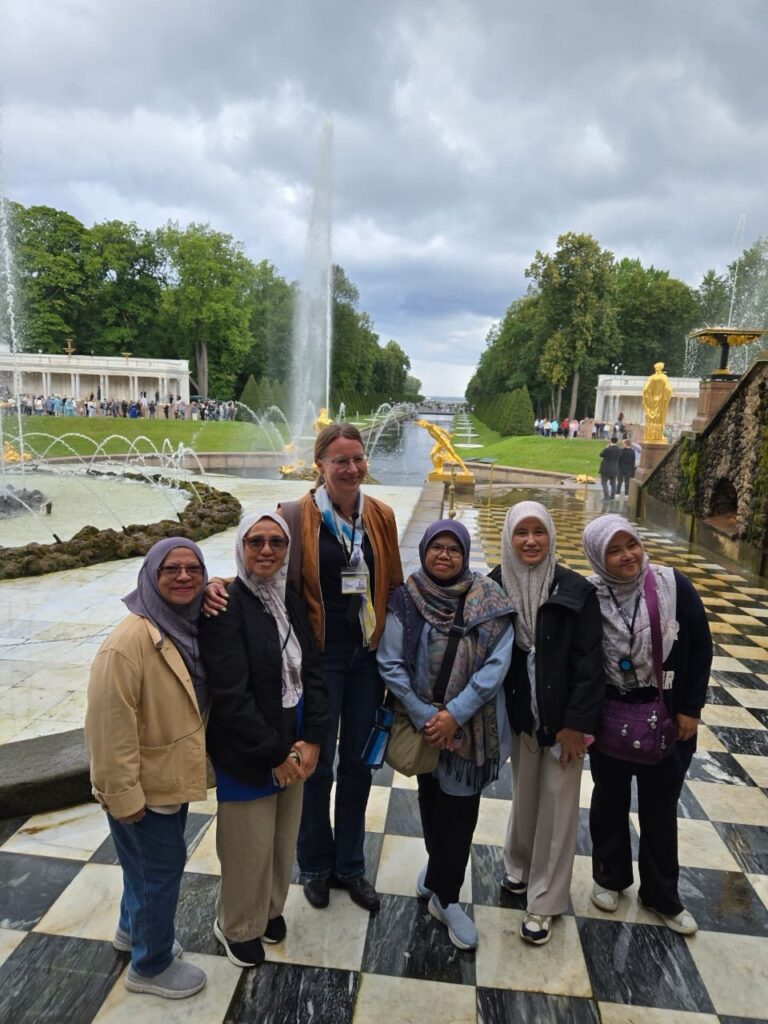
It was cold but the morning sunshine suddenly appeared when our minibus pulled upfront. The sun promised a good day ahead but we were warned to bring an umbrella. “ as long as you bring an umbrella it won’t rain“ , goes a Russian saying. So we sat down listening to Marina explaining in detail as we dozed in and out. We passed a section known as Chinatown —- a housing estate ventured with China. Yes sure! that’s not so surprising . The parking lot was almost full with tourist buses when we pulled in. This chaotic scene made you realised how important this place to these people. We passed through the many turnstiles to control the crowds and finally entered the palace.
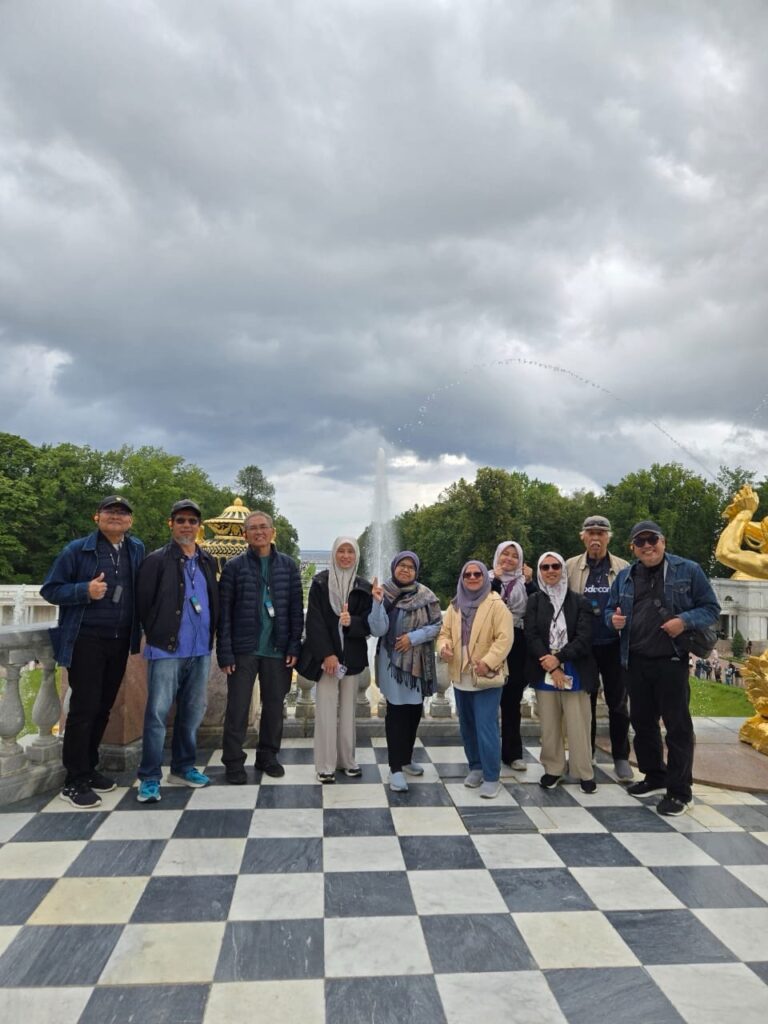
Peterhof is a vast series of palaces and gardens located in Petergof, Saint Petersburg, Russia, on the southern shore of the Gulf of Finland. Its name translates from Dutch as “Peter’s Court,” reflecting the taste of its founder, Peter the Great, who admired Dutch and French style.
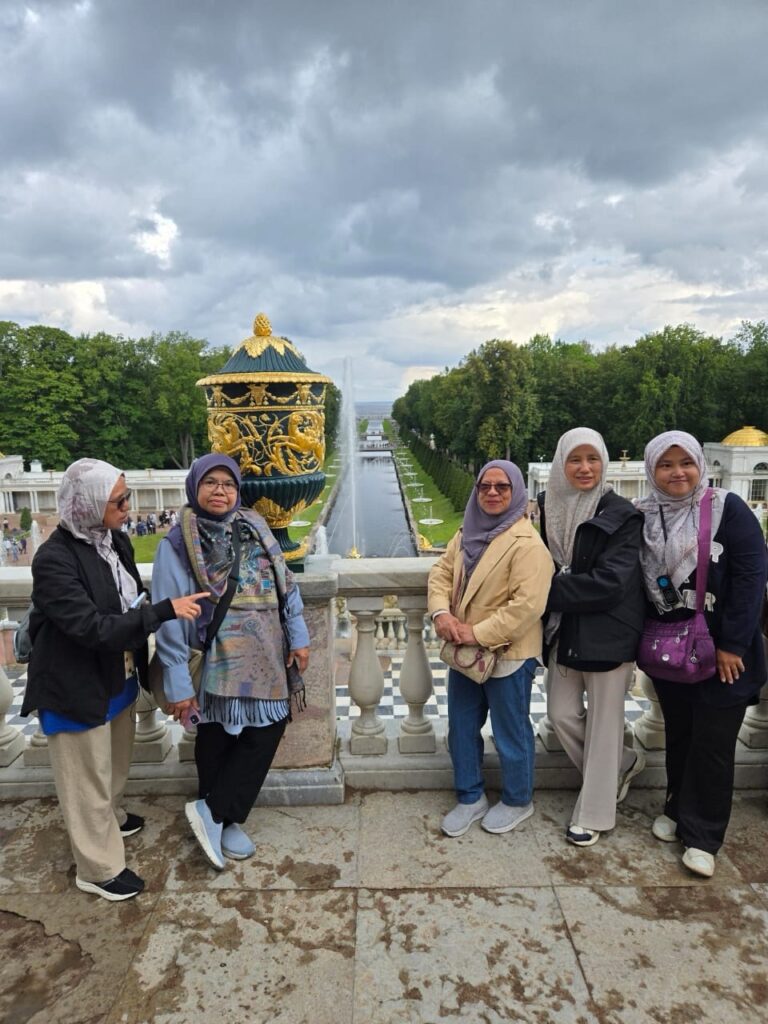
1. The Grand Cascade and Fountains: This is the centerpiece of the entire complex. It is a massive fountain system consisting of 64 different fountains, over 200 bronze statues, and countless water jets. The most famous statue is of Samson tearing open the jaws of a lion, symbolizing Russia’s victory over Sweden in the Great Northern War. What makes the fountains truly remarkable is that they operate without a single pump; they use a natural pressure system based on elevation differences from natural springs, a feat of 18th-century engineering.
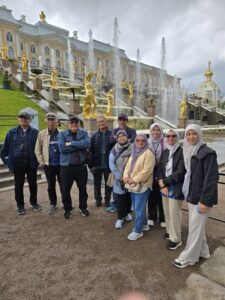
2. The Grand Palace: The largest and most opulent palace in the complex, it served as the main imperial residence at Peterhof. Its exterior is Baroque in style, while the interiors are decorated with incredible luxury, featuring gold, marble, fine wood, and priceless art.
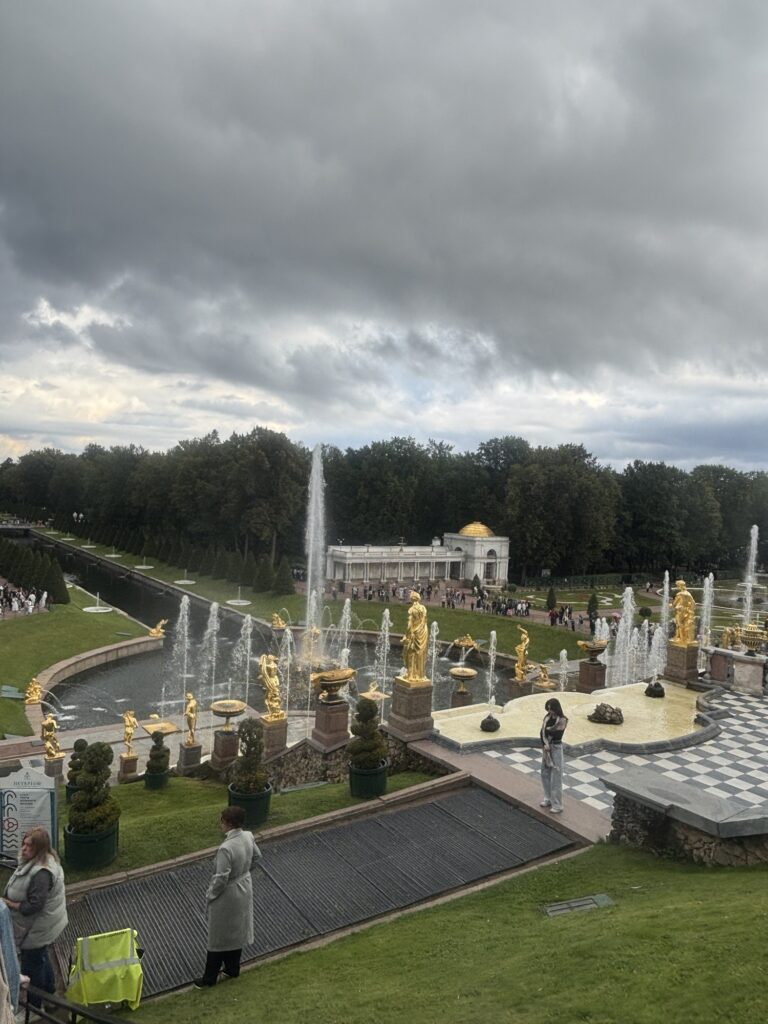
3. The Parks: The estate is divided into the meticulously landscaped Upper Garden (more formal) and the vast Lower Park (in the style of French formal gardens, leading down to the sea).
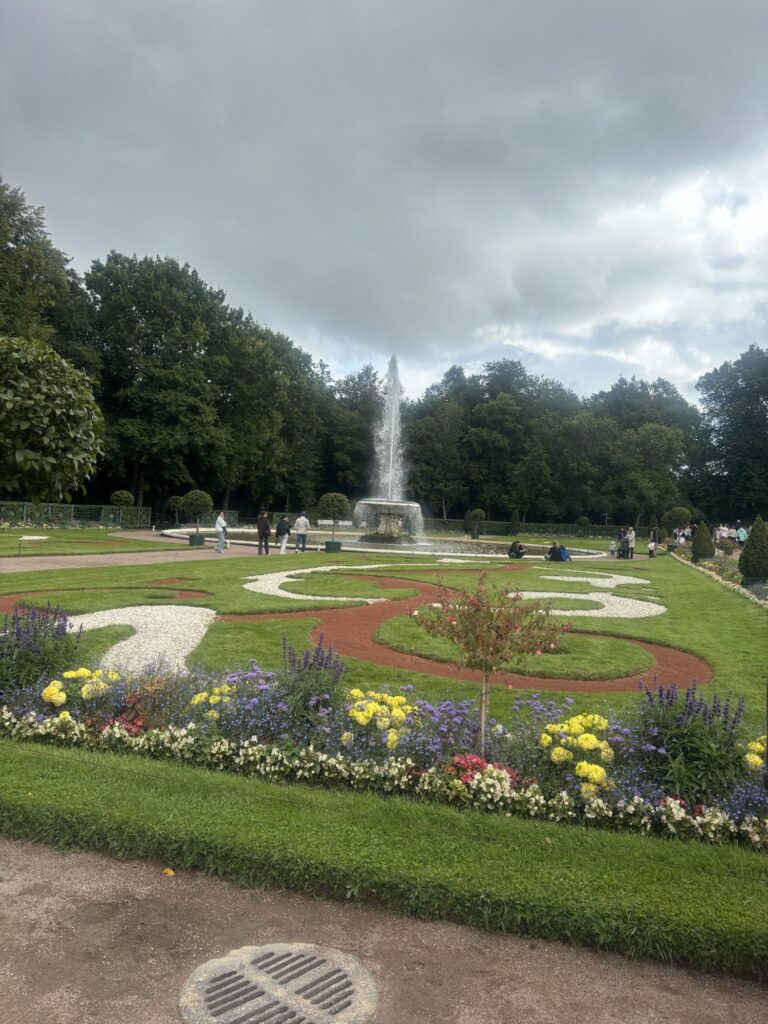
4. Other Palaces and Pavilions: The complex includes smaller, more intimate residences like:
· Monplaisir: Peter the Great’s favorite palace, a modest Dutch-style villa by the sea.
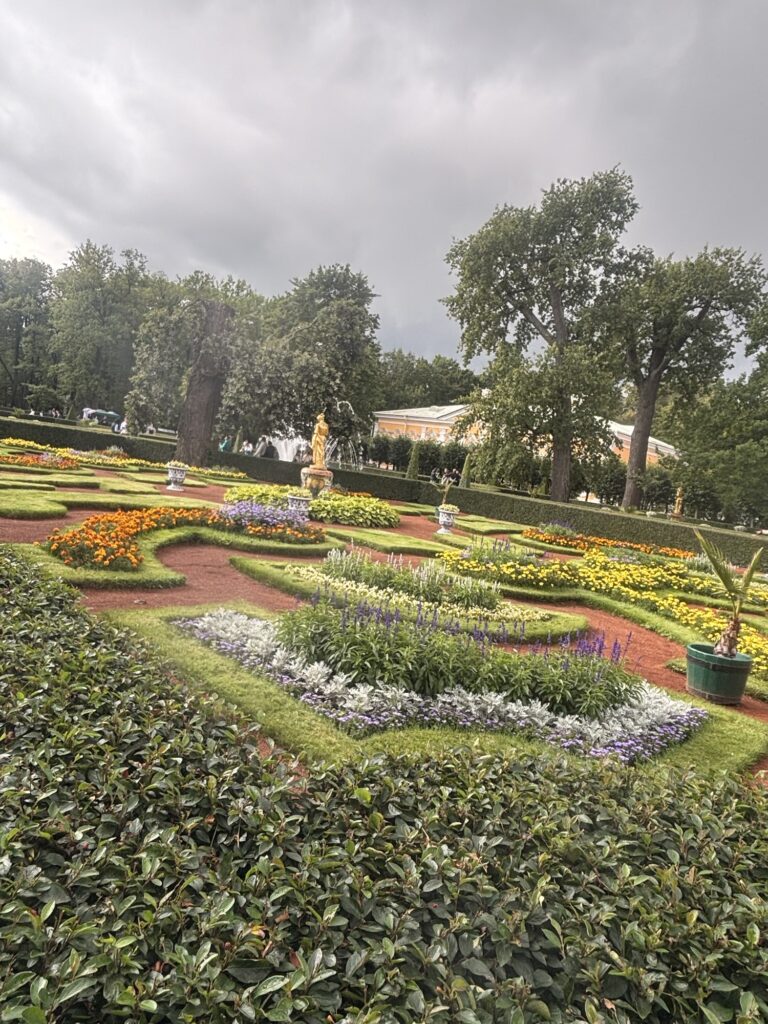
· The Catherine Wing: Built for Empress Elizabeth and later used by Catherine the Great.
· Marly Palace: Named after the French royal residence, it was used for housing distinguished guests.
· The Hermitage Pavilion: A dining pavilion where guests were raised to the upper floor by a mechanical lift for private dinners without servants.
Who Used to Live There?
Peterhof was primarily a summer residence for the Russian Imperial family, the Romanovs, from its construction in the early 18th century until the fall of the dynasty in 1917.
The key residents and builders were:
1. Peter the Great (1672-1725): The founder. He conceived Peterhof in 1714 as a monumental celebration of Russia’s new status as a major European power and access to the Baltic Sea. He personally sketched the original plans for the parks and fountains and lived in the smaller Monplaisir palace, which suited his simpler tastes.
2. Empress Elizabeth (1709-1762): Peter’s daughter. She is responsible for transforming her father’s relatively modest “Grand Palace” into the enormous, glittering Baroque masterpiece we see today. She hired the famed Italian architect Bartolomeo Rastrelli (who also designed the Winter Palace and Catherine Palace) to massively expand and lavishly decorate the palace in the mid-18th century. She used it extensively for extravagant court festivities.
3. Catherine the Great (1729-1796): Although she preferred her own palaces at Tsarskoye Selo, she did spend time at Peterhof. She found Elizabeth’s Baroque style outdated and had some interiors within the complex redesigned in the newer, more austere Neoclassical style. She primarily used the Catherine Wing within the Peterhof complex.
4. Later Romanov Emperors (Alexander I, Nicholas I, Alexander II, Alexander III, Nicholas II): All subsequent tsars used Peterhof as a summer home. Each made their own modifications, additions, and modernizations (like adding railway connections). Nicholas II, the last Tsar, and his family were particularly fond of Peterhof and made it their primary summer residence. They lived in a newer, more comfortable mansion called The Farm Palace within the Alexandria Park section of Peterhof, rather than in the overwhelming formality of the Grand Palace.
Some info below and historical facts above produced by Deepseek AI engine.
· WWII Damage: During World War II, Peterhof was occupied by German troops for almost three years. The retreating army mined and nearly destroyed the complex, leaving the Grand Palace a hollow shell and destroying much of the fountain system.
· Miraculous Restoration: The meticulous and heroic post-war restoration by Soviet architects, artists, and engineers is considered a miracle. Using original plans, pre-war photographs, and salvaged fragments, they painstakingly rebuilt the palaces and revived the fountains. It stands as a powerful symbol of resilience.
· Today: Peterhof is a UNESCO World Heritage Site and one of the most popular museums in Russia, drawing millions of visitors each year to witness its stunning beauty and imperial grandeur.
In summary, Peterhof is a magnificent imperial palace and garden complex built by Peter the Great and expanded by his descendants, primarily used as a summer residence by the Romanov dynasty for two centuries. It is a masterpiece of landscape design, architecture, and engineering.


